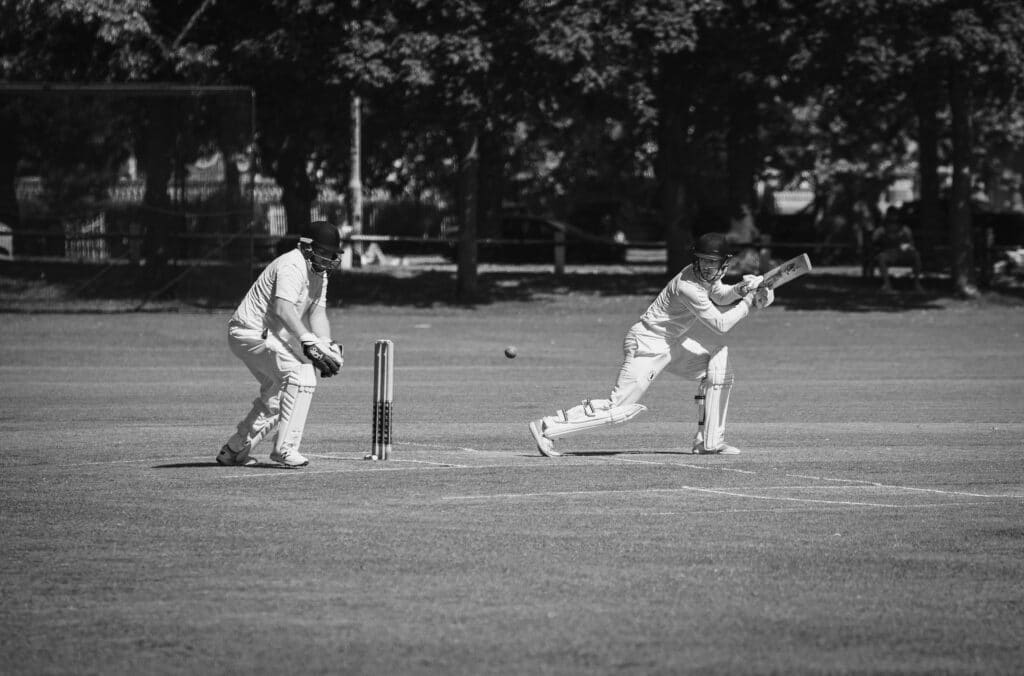How does grip strength indicate health?
What we’ll cover
How does grip strength indicate health?
Grip strength is much more than a measure of how strong your hands are—it’s a powerful indicator of your overall health and wellbeing. Research has shown that the strength of your grip can reveal crucial insights about your physical fitness, risk of chronic diseases, and even life expectancy. Whether you’re an athlete striving for peak performance or someone looking to maintain independence as you age, grip strength is a key metric worth understanding.
In this blog, we’ll explore how grip strength correlates with longevity and overall health, how it’s measured, and effective ways to improve it. From practical exercises to professional guidance, you’ll discover why grip strength matters and how you can make it a cornerstone of your fitness journey.
Key Insights
- Grip Strength as a Health Biomarker: Grip strength is a reliable indicator of overall health, predicting future muscle strength, bone density, physical function, and even life expectancy.
- Correlation with Chronic Diseases: Weak grip strength is linked to a higher risk of conditions such as cardiovascular disease, diabetes, osteoporosis, arthritis, and reduced immune health.
- Measuring Grip Strength: A dynamometer is the standard tool for measuring grip strength. It provides accurate data that can be compared to benchmarks based on age and gender, helping to identify weaknesses or imbalances.
- Improving Grip Strength: Resistance training and bodyweight exercises like farmer’s carries, dead hangs, and chin-ups are effective ways to strengthen your grip.
- Variety of Exercises: Target different aspects of grip strength—crushing, pinching, supporting, and rotational—through exercises such as plate pinches, wrist curls, and towel grip pull-ups.
- Professional Guidance: Personalised exercise plans, like those offered by ME Physio, ensure safe and effective progression tailored to individual needs.
- Consistency is Key: Regular, progressive training is essential for building and maintaining grip strength, which supports overall fitness and health.
How does grip strength correlate with to life expectancy?
Hand grip strength has been shown to be an incredibly accurate biomarker for current and future health. Recent studies have shown a strong correlation between grip strength and the ability to predict or anticipate future muscle strength, muscle mass, bone density and function. Interestingly, this has been shown as an accurate predictor for both males and females across all ages.
For those over 65, grip strength is an accurate predictor for a decline in both physical and mental function. A weak grip has been linked to reduced bran function, osteoporosis, obesity, diabetes, rheumatoid arthritis and an increased likelihood of falling. In fact, a recently study over 140 000 older adults over four years found that reduced grip was related to higher likelihood of heart attack, stroke, cardiovascular disease and even death.
Beyond these associations, weak grip strength has been linked to a higher risk of chronic diseases and reduced immune health. Lower grip strength is often correlated with systemic inflammation, which is a contributing factor to conditions such as arthritis, cardiovascular disease, and some cancers. It also reflects poor immune system function, which can make the body less capable of fighting infections or recovering from illnesses.Additionally, grip strength reflects your level of physical activity and exercise habits. While a decline in grip strength is a natural part of aging, a weak grip often signals insufficient physical activity, making it a crucial metric for understanding how lifestyle choices impact long-term health outcomes.
How do you measure grip strength?
Grip strength is commonly measured using a dynamometer, a specialised device that quantifies the maximum force your hand can exert. During the measurement, the individual grips the dynamometer as tightly as possible, and the device records the peak force. This provides an objective and reliable measurement of hand strength.
At ME Physio, our team uses dynamometers to track and measure grip strength accurately. While it’s normal to observe differences between your dominant and non-dominant hand, we account for these variations by averaging the results. This allows us to compare your grip strength to established benchmarks based on age and gender, offering a clear picture of where you stand relative to healthy norms.
Grip strength testing can also help identify imbalances or weaknesses, which may point to underlying health concerns or specific areas requiring targeted improvement. Whether you’re monitoring rehabilitation progress, tracking overall fitness, or simply curious about your physical health, measuring grip strength is an essential and insightful tool.
How do I improve my grip strength?
Improving your grip strength is straightforward and involves gradually and safely increasing your overall physical activity. While it might seem like grip strength exercises are limited to squeezing stress balls or resistance grips, there’s a much broader range of effective strategies to build strength and endurance in your hands and forearms.
One of the most effective methods is incorporating resistance training into your routine. Exercises that require holding weights or resistance equipment, such as resistance bands, dumbbells, or barbells, naturally challenge and strengthen your grip.
While bodyweight exercises are another excellent option. These exercises engage your grip dynamically, offering a functional approach to building strength.
For beginners or those unfamiliar with exercise routines, it’s important to start with a program tailored to your fitness level and needs. At ME Physio, our expert physiotherapists can design a personalised exercise plan to help you safely and effectively improve your grip strength. Whether you’re recovering from an injury or aiming to enhance your overall fitness, our team is here to guide you.
Exercises for grip strength
Incorporating specific exercises into your routine is a powerful way to develop grip strength and improve hand and forearm endurance. These exercises target different aspects of grip strength, including crushing, pinching, supporting, and even rotational grip. Here are some effective exercises to include in your workout:
- Farmer’s Carries
Hold a heavy dumbbell or kettlebell in each hand and walk a set distance. This exercise challenges your grip while also engaging your core and lower body for added benefits. - Dead Hangs
Simply hang from a pull-up bar with both hands for as long as possible. Dead hangs help build grip endurance and prepare you for more advanced bodyweight exercises like pull-ups and chin-ups. - Towel Grip Pull-ups
Wrap a towel around a pull-up bar and grip the towel ends instead of the bar. Perform pull-ups or just hold onto the towel. This variation intensifies the grip challenge by engaging your fingers and forearms more directly. - Plate Pinches
Grip the sides of a weight plate (or two if you’re advanced) and hold it for as long as possible. This exercise focuses on your pinch grip, an essential component of overall hand strength. - Wrist Curls and Reverse Wrist Curls
Using a dumbbell or barbell, perform wrist curls to strengthen the muscles of your forearms. Reverse wrist curls target the opposing muscles, ensuring balanced development. - Captains of Crush Grippers
Hand grippers are a popular tool for building crushing grip strength. These devices allow you to progressively increase resistance and focus specifically on finger and hand strength. - Sandbag Carries or Lifts
Lifting and carrying a heavy, awkward object like a sandbag forces your grip to adapt dynamically, replicating real-world tasks.
Remember, grip strength improves with consistency and progressive overload. Start with manageable weights and gradually increase the intensity as your grip becomes stronger. For guidance on technique and form, or to create a grip-strengthening program tailored to your goals, the expert team at ME Physio is here to help. Book an appointment online or give us a call today!
FAQs
1. What chronic diseases are linked to weak grip strength?
Weak grip strength has been associated with several chronic diseases, including:
- Cardiovascular diseases such as heart attack and stroke.
- Diabetes, due to its link with reduced muscle strength and systemic inflammation.
- Osteoporosis, as weak grip strength can indicate lower bone density.
- Rheumatoid arthritis, often associated with reduced hand function and grip strength.
- Obesity, reflecting lower physical activity levels.
- Certain cancers, as weak grip strength can correlate with poor immune function and systemic inflammation.
2. At what age should I start paying attention to my grip strength?
While grip strength is essential at every stage of life, it becomes increasingly important to monitor from your 40s onwards. This is when muscle mass and strength naturally begin to decline due to aging. For individuals over 65, grip strength is a critical predictor of health risks such as falls, cognitive decline, and chronic disease. However, starting earlier helps establish healthy habits and prevent loss of strength later in life.
3. What are some common mistakes people make when trying to improve grip strength?
- Focusing on one exercise: Limiting training to one type of grip (e.g., stress balls) neglects other essential grip components like pinching and supporting strength.
- Overtraining: Skipping rest days can lead to fatigue or injuries like tendinitis.
- Poor technique: Incorrect form, such as excessive wrist motion, reduces effectiveness and increases injury risk.
- Using improper resistance: Starting too heavy or too light can hinder progress; gradual progression is key.
- Ignoring warm-ups: Skipping proper warm-ups can strain muscles and joints.
- Neglecting overall fitness: Grip strength improves more effectively with compound exercises like deadlifts and pull-ups.
- Failing to track progress: Regularly measuring grip strength ensures you’re progressing and adjusting as needed.
- Overlooking health issues: Weak grip may signal underlying problems, like arthritis or nerve issues, that require attention.
4. What is considered a normal grip strength for my age and gender?
Grip strength norms vary by age and gender:
- Men: Grip strength ranges from 95–105 lbs (43–47 kg) in younger adults to 70–85 lbs (32–39 kg) for older adults.
- Women: Grip strength typically ranges from 55–65 lbs (25–30 kg) in younger adults to 40–50 lbs (18–23 kg) for older adults.
These figures can vary depending on fitness levels and overall health. Comparing your results to age- and gender-specific benchmarks is a good way to assess your grip strength.
5. How long does it take to notice improvements in grip strength?Improvements in grip strength can be noticeable within 4–6 weeks of consistent training. Factors like exercise intensity, frequency, and your starting strength level influence progress. Beginners may experience faster gains initially due to neuromuscular adaptation. Over time, steady progression and consistent effort will yield significant results.


